Among the animals that exist on our planet, there exists a special group that possesses a hidden weapon – poison. These animals, termed poisonous animals, produce potent toxins that can cause harm when ingested.
Poisons can have varying effects. There are neurotoxins, hemotoxins, and cytotoxins, all of which can wreak havoc on the body systems of their victims.
It is important to differentiate between animals that are poisonous versus ones that are venomous. While many use these terms interchangeably, they actually mean different things.
Venomous creatures inject their toxins into their victims via modes, such as fangs, or stingers. On the other hand, poisonous animals administer their toxins via more indirect routes including through inhalation, ingestion, or via touch.
Many poisonous animals secrete their toxins through the surface of their skin.

Where do these animals get their poisons from? Many acquire their toxic substances from their diet.
They feed on plants, insects, or other organisms that contain toxic compounds. Through a process known as “sequestering”, they store these toxins within their bodies. Conversely, other animals have the ability to generate toxins all on their own.
The study of poisonous animals has yielded numerous significant findings. For example, it has contributed to the development of antidotes, treatments, and even certain drugs. 1
The exploration of these interesting animals highlights the remarkable diversity and strategies found in the animal kingdom. Furthermore, it provides valuable insights into medicine, technology, and conservation efforts around the globe.
Without further ado, here are the world’s top 10 most poisonous animals.
10. Asian Tiger Snake
This deadly snake is also known as the ‘Tiger Keelback’ snake and is primarily found in the forests, shrublands, and grasslands of China, Japan, and Korea.
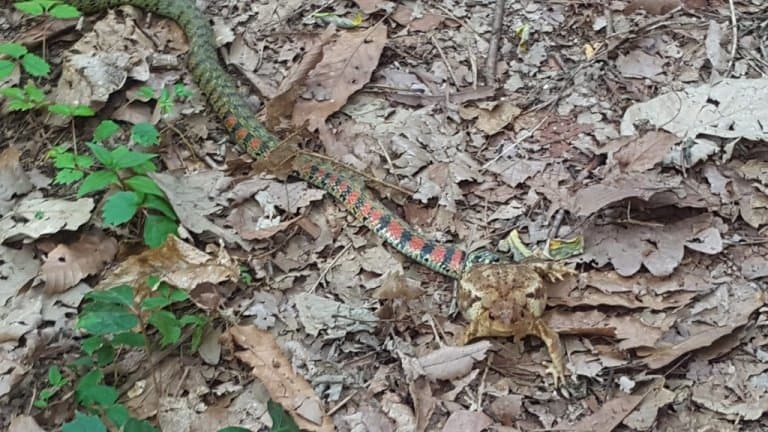
What’s special about this snake is that it is both venomous and poisonous.
It can inject toxins into its victims through a bite, but it also stores poisons in its skin, which it obtains from eating poisonous toads.
In some areas, there is illegal trade of this Tiger Keelback snake in the use for snake liquor production. Its populations are currently considered by the IUCN to be stable.
9. Hooded Pitohui
The hooded pitohui is orange and black, with strong beaks and dark eyes. They are quite small in size, but their poison packs a powerful punch.
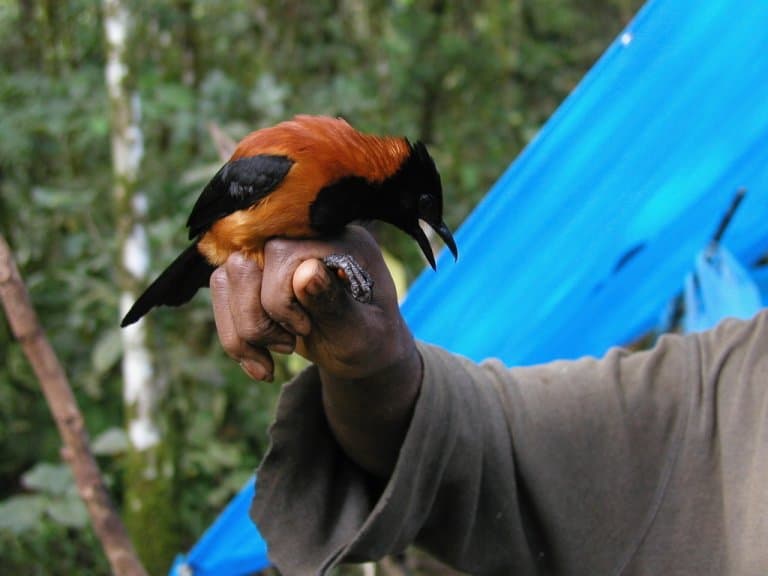
In their skin and feathers, the hooded pitohui stores noxious compounds that can cause numbness and burning. Their toxins are similar to those found in poison dart frogs, one of the most toxic animals in the world.
Birds residing in shared habitats have been observed employing mimicry tactics. By evolving to have a similar appearance to that of the hooded pitohui, other species hope to gain an extra layer of protection from hungry predators.
8. Hawksbill Sea Turtle
Hawksbill sea turtles are named for their pointed beaks. They primarily inhabit tropical oceans, where they flourish within coral reefs.
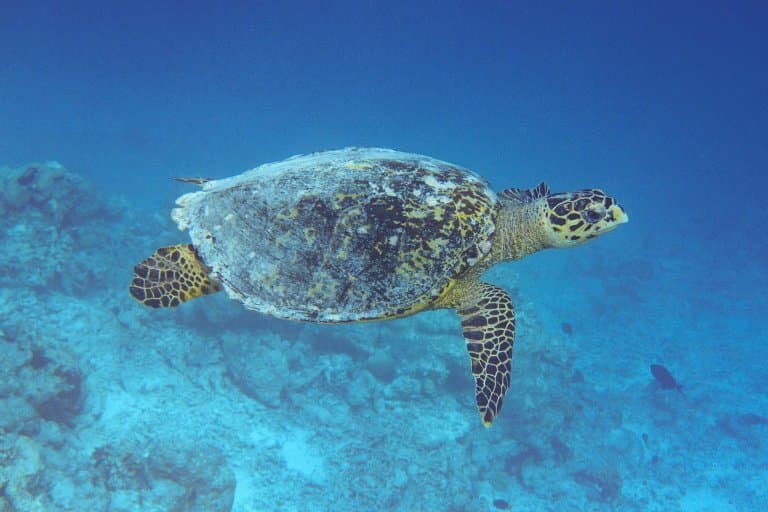
The consumption of toxic algae, sponges, and venomous prey contributes to the hawksbill sea turtles’ flesh becoming highly poisonous. Those who ingest their meat are vulnerable to marine turtle poisoning and may experience symptoms including nausea, diarrhea, and vomiting.
Tragically, these beautiful creatures are critically endangered due to the destruction of their habitats and unsustainable hunting practices. 2
7. Cane Toad
While it is native to South and Central America, the cane toad has gained infamy as one of the most destructive invasive species worldwide. It was introduced to numerous regions with the intention of aiding in pest management, however, they have produced at astonishingly rapid rates and overrun many habitats.

From parotid glands behind their shoulders, cane toads produce a creamy poison called bufotoxin. When consumed or absorbed through the skin, this toxin can have systemic effects that mainly affect the heart and nervous system.
They reproduce throughout the year and, in a single cycle, they can lay between 8,000 to 30,000 eggs at a time. These toads are also poisonous in their egg and tadpole stages.
6. Golden Poison Dart Frog
Poison dart frogs exhibit an impressive array of bright hues, showcasing colors ranging from yellow, orange, green, blue, and red, to mesmerizing blends. Their flashy exteriors are meant to ward off predators.
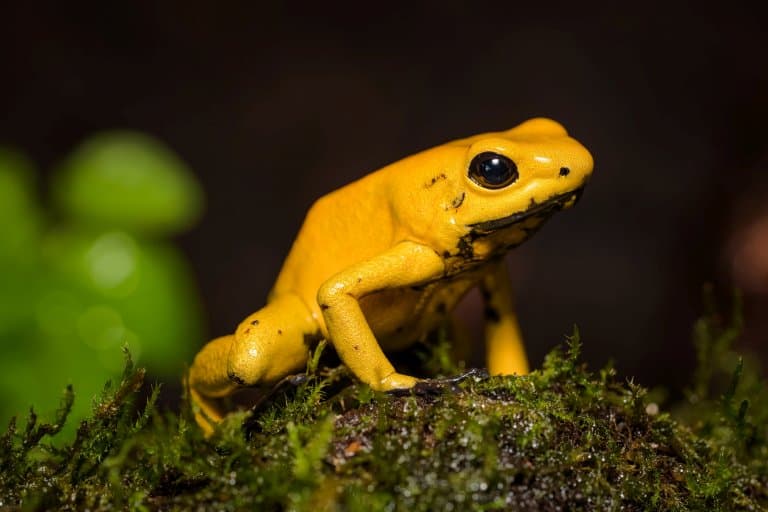
They may be small, but they are deadly. It has been suggested that a single poison dart frog has enough poison to kill 20,000 mice.
As amphibians, poison dart frogs thrive in moist environments. The largest populations are found in Central and South America. 3
5. Comb Star
Comb stars are sea stars found in the Indo-Pacific region. Their five arms are adorned with pointed spines that make them experts in digging.
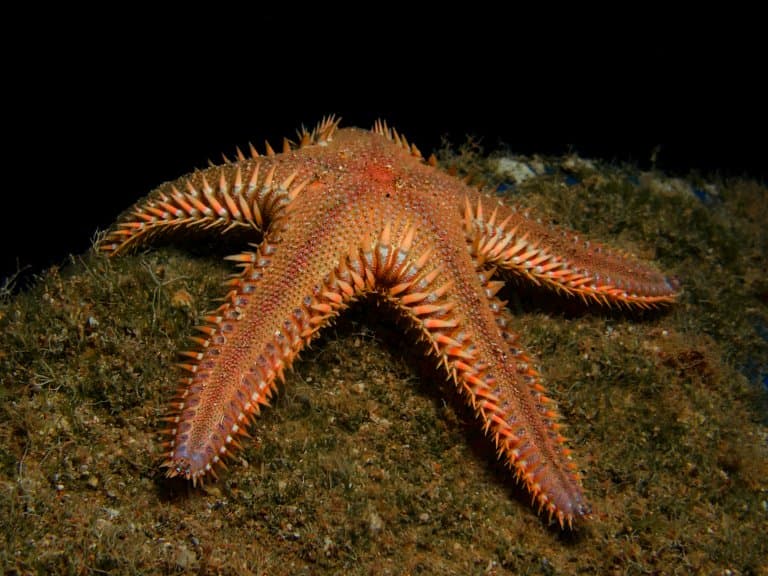
Their flesh contains tetrodotoxin, a potent neurotoxin that induces paralysis in its victims. Eventually, respiratory failure leads to the demise of the victim as there is currently no known antidote for comb star poison.
Reports suggest that a mere gram of comb star flesh possesses enough toxin to kill 520 mice. 4
4. Rough Skinned Newt
Rough skinned newts are carnivores that sustain themselves by consuming insects, worms, and even small eggs. They have the ability to extract and store poison from their prey within their skin.
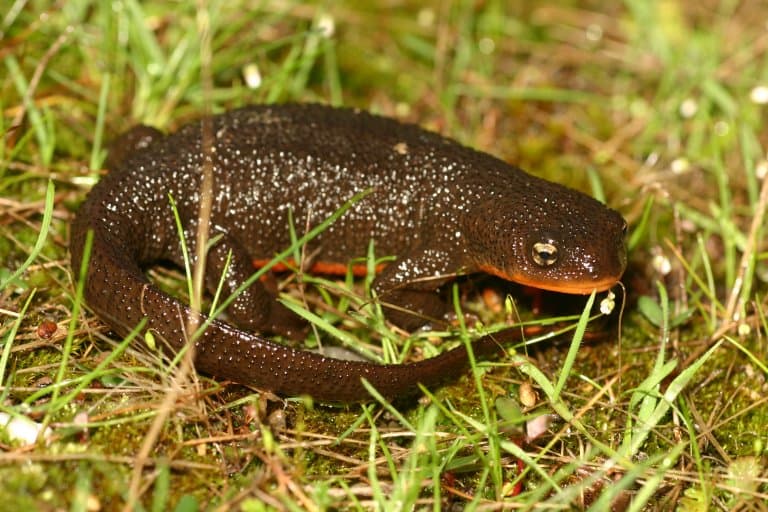
To deter predators, rough skinned newts produce a pungent odor. However, if a predator still decides to consume them, they will experience a numbing sensation and undergo cardiac arrest.
The poison contained in the rough skinned newt’s flesh is comparable to that found in puffer fish. Interestingly, their level of toxicity varies depending on the specific geographical region in which they reside.
3. Striated Surgeonfish
Like comb stars (mentioned above), striated surgeonfish reside in the Indo-Pacific region. They are currently classified by the IUCN as a species of Least Concern, so their populations are relatively stable.

They acquire their toxins by consuming microscopic dinoflagellates. These fish are frequently observed foraging in rocky areas and coral reefs.
Striated surgeonfish-related poisonings affect between 20,000 to 50,000 people each year, causing symptoms similar to food poisoning. The effects can be quite long-lasting, persisting for several months or even years.
2. Box Jellyfish
The poison of a box jellyfish is considered to be one of the deadliest in the world. Their effect on the body is so painful that some individuals have been documented to go into shock or pass away from heart failure.

Each box jellyfish boasts 15 tentacles, each of which can extend up to 10 feet in length. Remarkably, every tentacle houses approximately 5,000 stinging units.
You may be interested to know that box jellyfish have eyes—24 in fact, arranged in groups of six around their body. The exact nature of their visual processing remains unclear, but their eyes possess ocular structures similar to that of humans (e.g. lens, retina, iris, cornea). 5
1. Pufferfish
Taking the lead as the world’s most poisonous creature is the pufferfish. Its liver, kidneys, and spines contain toxins that are often lethal to humans. The reported toxicity of pufferfish toxin surpasses cyanide by approximately 1,200 times.

In some regions, the flesh of specific puffer fish species is regarded as a delicacy. However, great caution must be exercised when consuming it, as only a select group of licensed chefs are allowed to prepare it.
True to their name, the pufferfish possesses the ability to rapidly expand in size when threatened. Using their elastic stomachs, they ingest significant amounts of water and air, inflating their bodies. 6
Final Thoughts
That completes our list of the 10 most poisonous animals in the world.
The world of poisonous animals is a fascinating and diverse one. Armed with potent toxins, these animals command both our respect and caution. Over millions of years, they have come up with a formidable arsenal of deadly substances, each with its own story to tell.
From the vibrant colors of dart frogs to the sharp stings of the jellyfish, creatures of the animal kingdom have developed incredible ways to defend themselves and secure their place in the complex web of life.
Yet, despite all we know, there is still so much more to discover and examine. The study of poisonous animals will be an ongoing journey, filled with countless mysteries waiting to be unravelled.
Fact Sources & References
- Leoma Williams (2022), “10 most venomous animals“, BBC Wildlife Magazine.
- “Hawksbill Turtle“, WWF.
- Eric Niiler (2014), “Just touching this beautiful frog can be deadly“, The Washington Post.
- Keisuke Miyazawa et al (1986), “Occurrence of tetrodotoxin in the flatworm Planocera multitentaculata“, ScienceDirect.
- “What is the most venomous marine animal?“, National Ocean Service.
- Noguchi, T., Arakawa, O. and Takatani, T. (2006). Toxicity of pufferfish Takifugu rubripes cultured in netcages at sea or aquaria on land. Comparative Biochemistry and Physiology Part D: Genomics and Proteomics, [online] 1(1), pp.153–157. doi:10.1016/j.cbd.2005.11.003.
